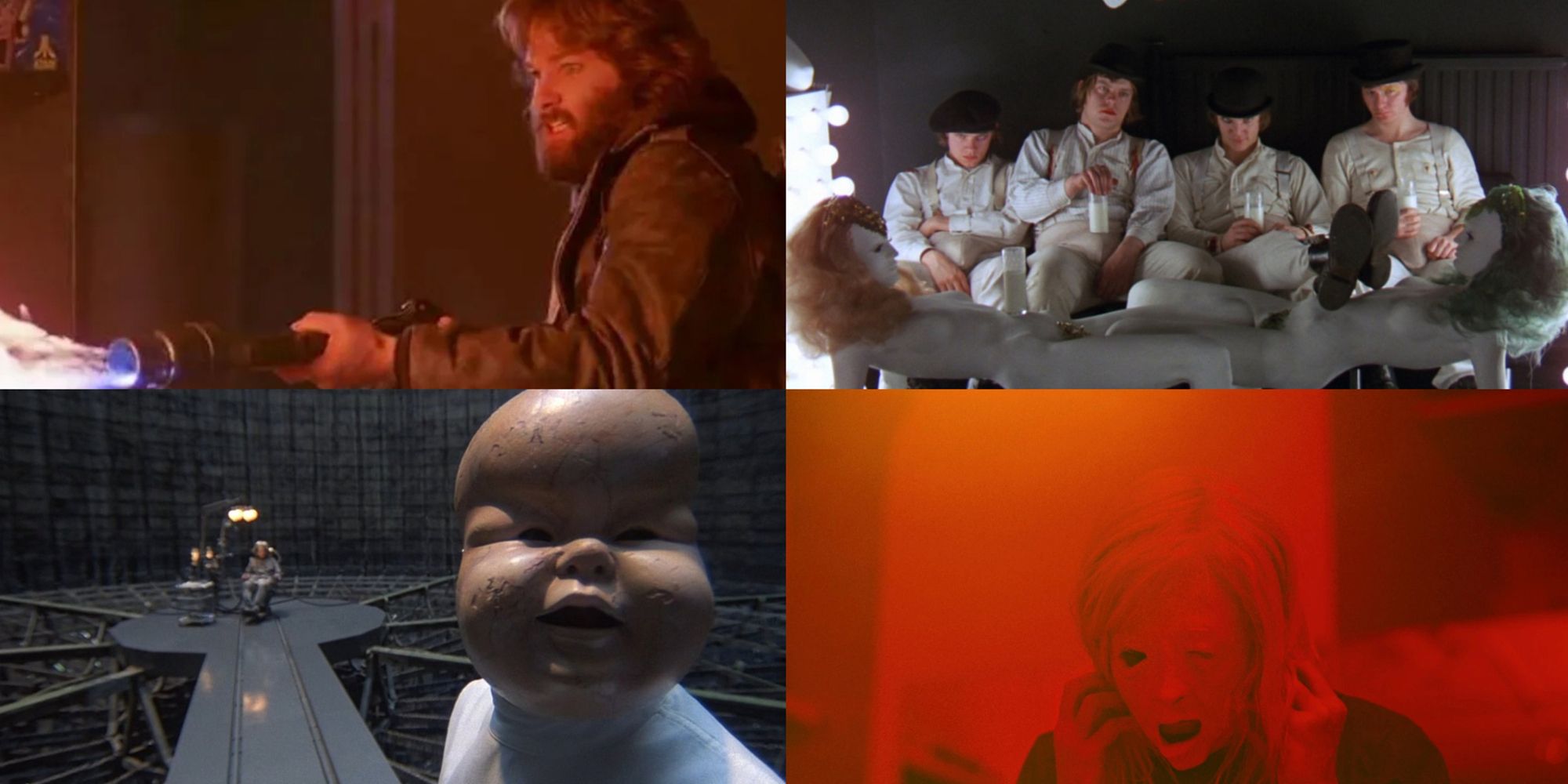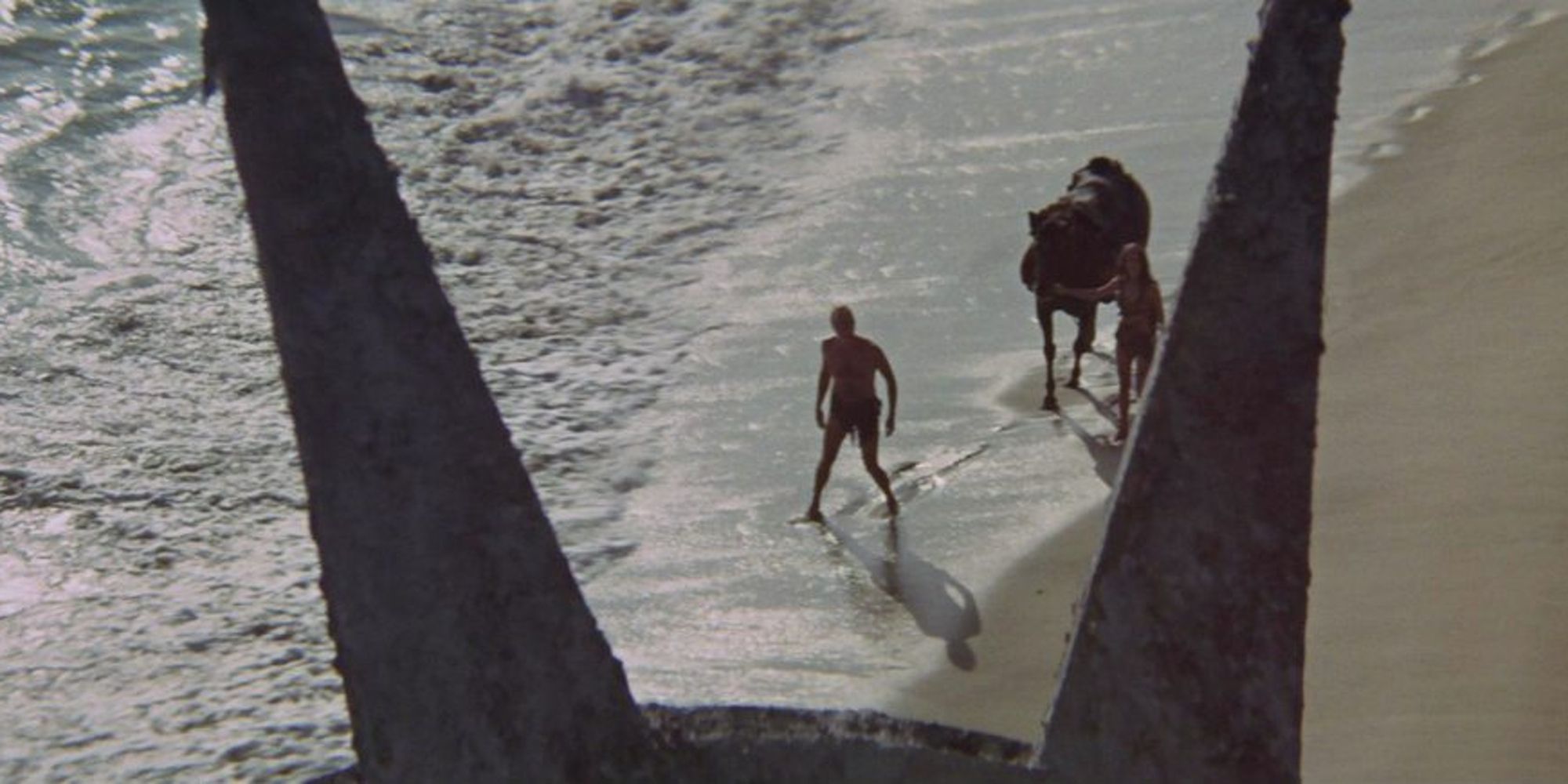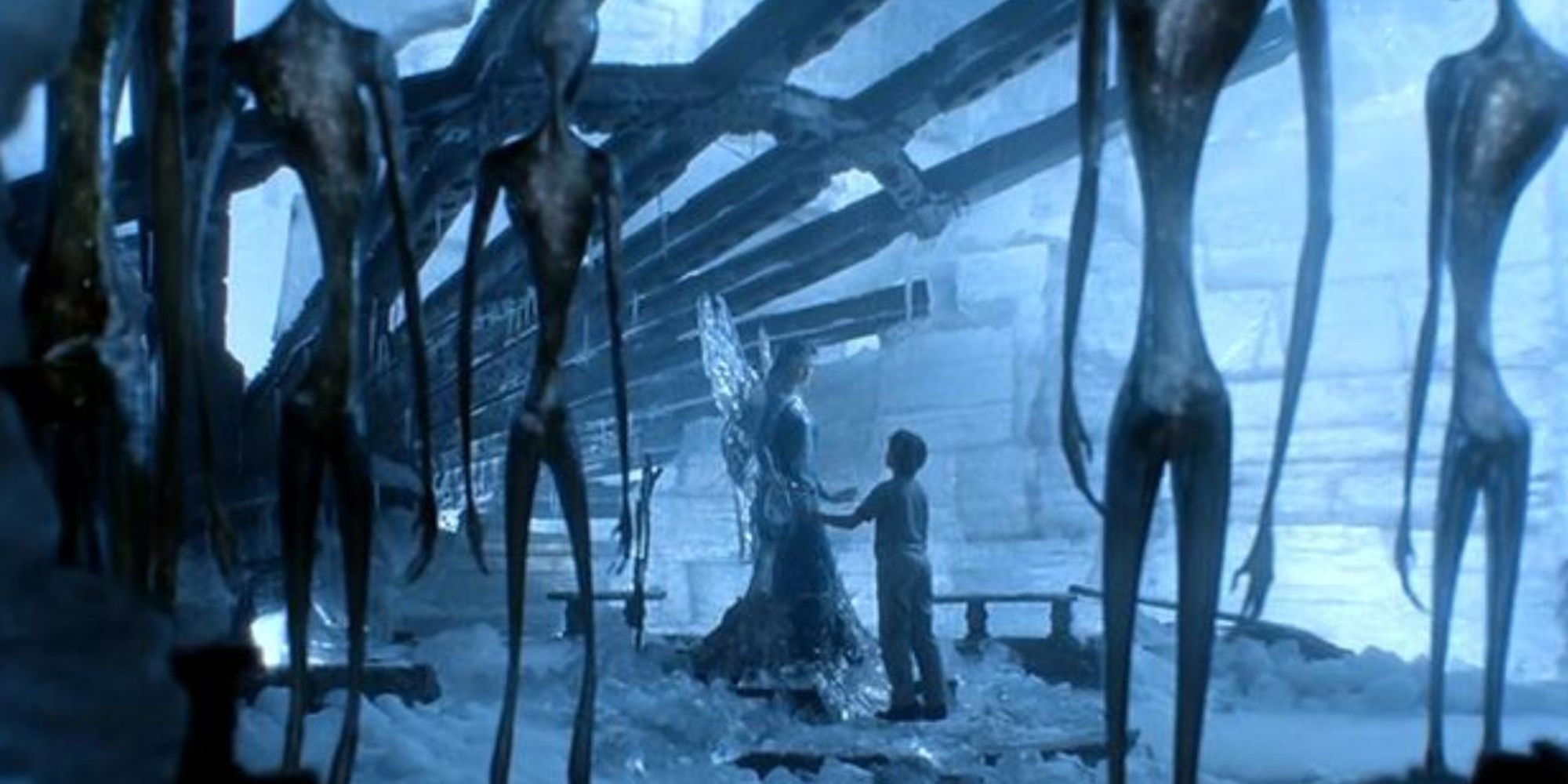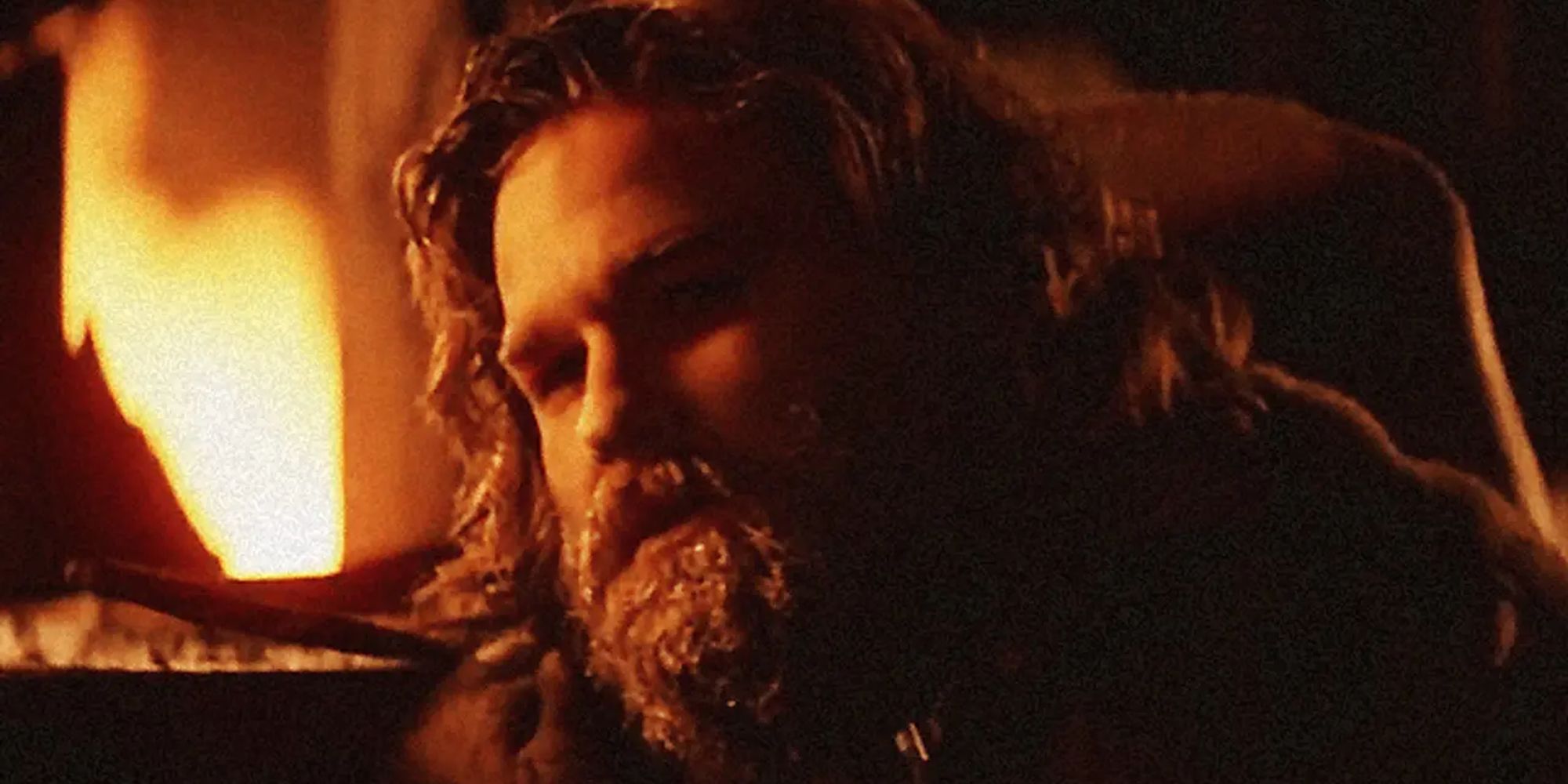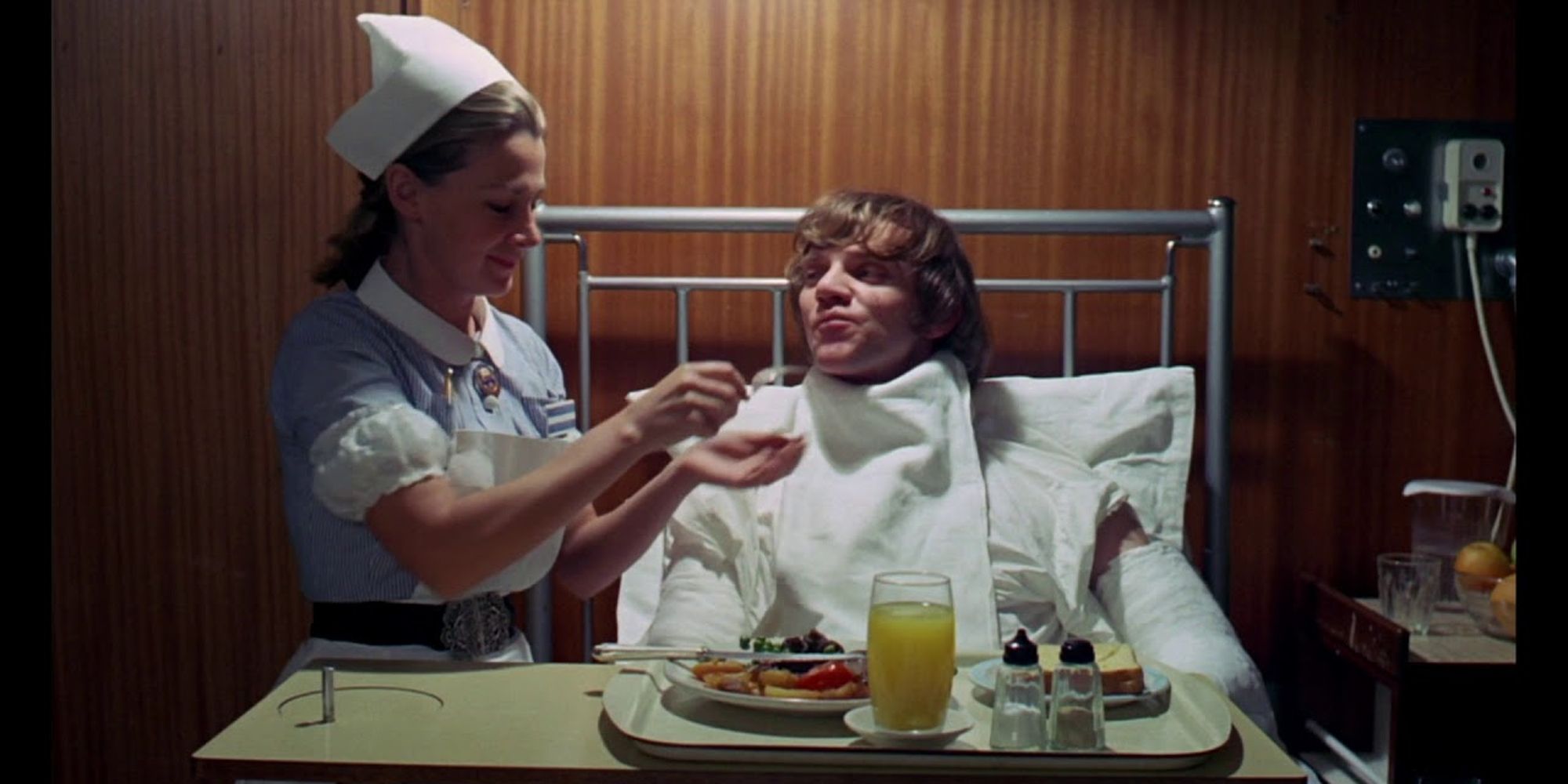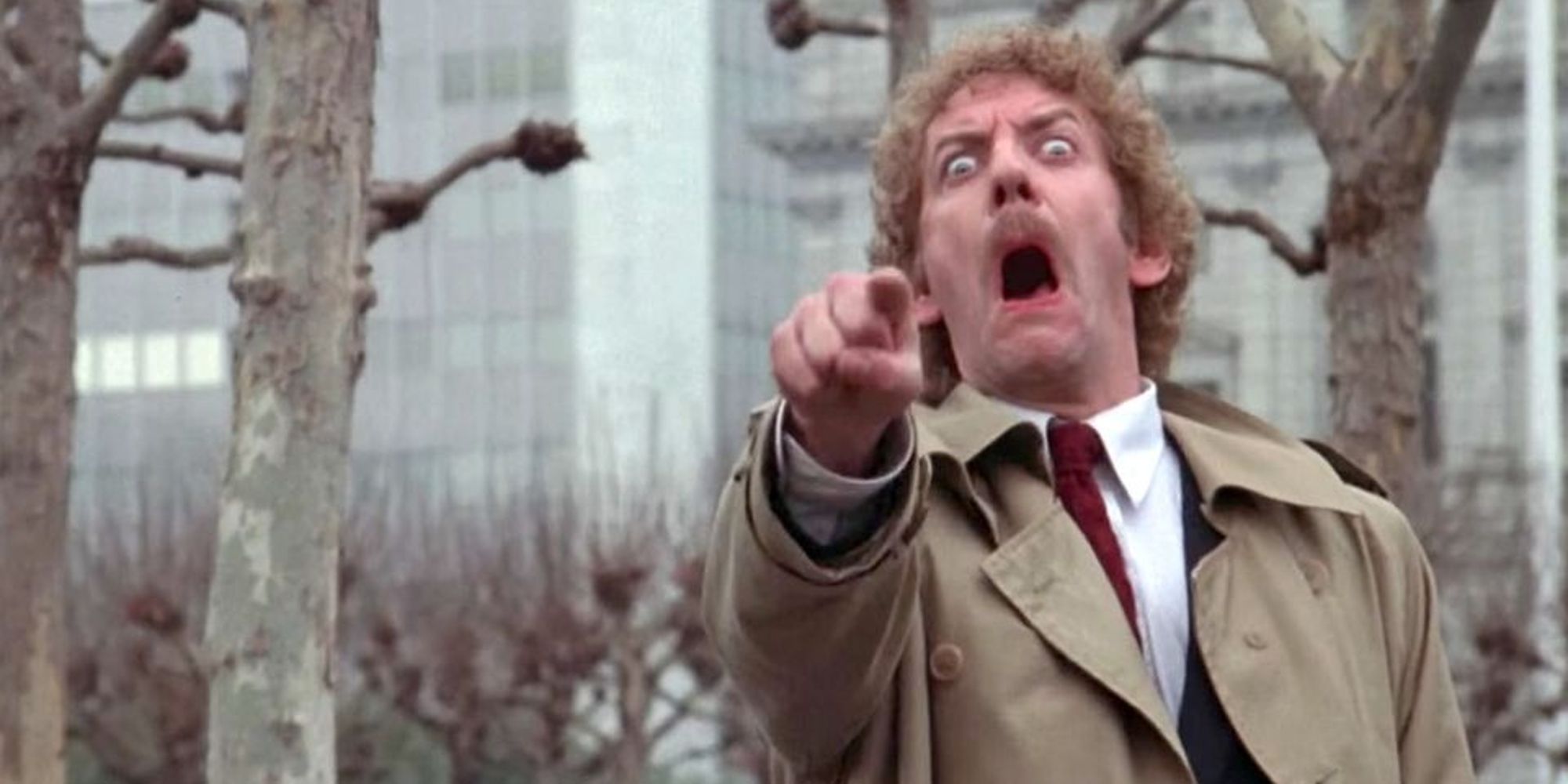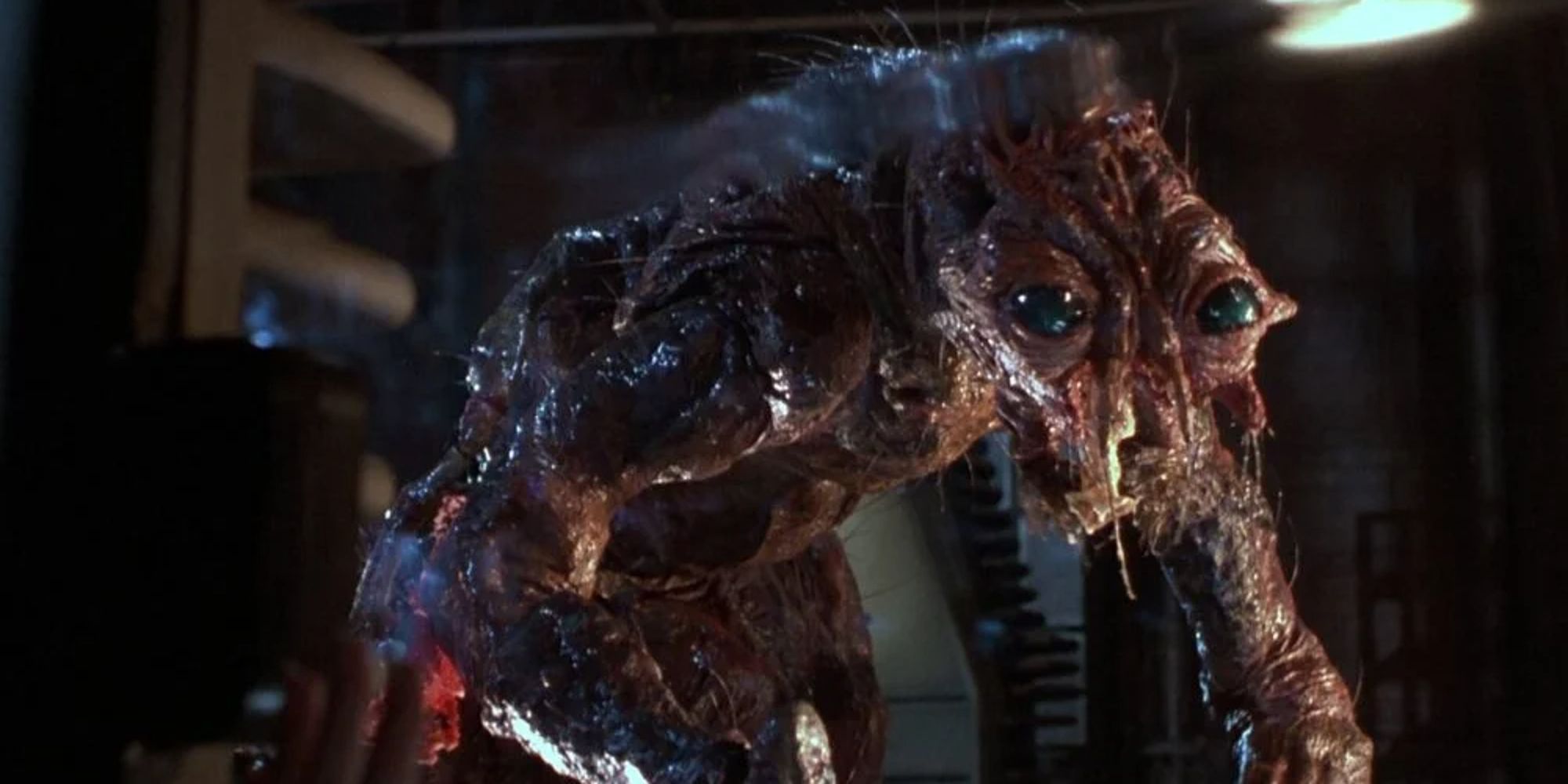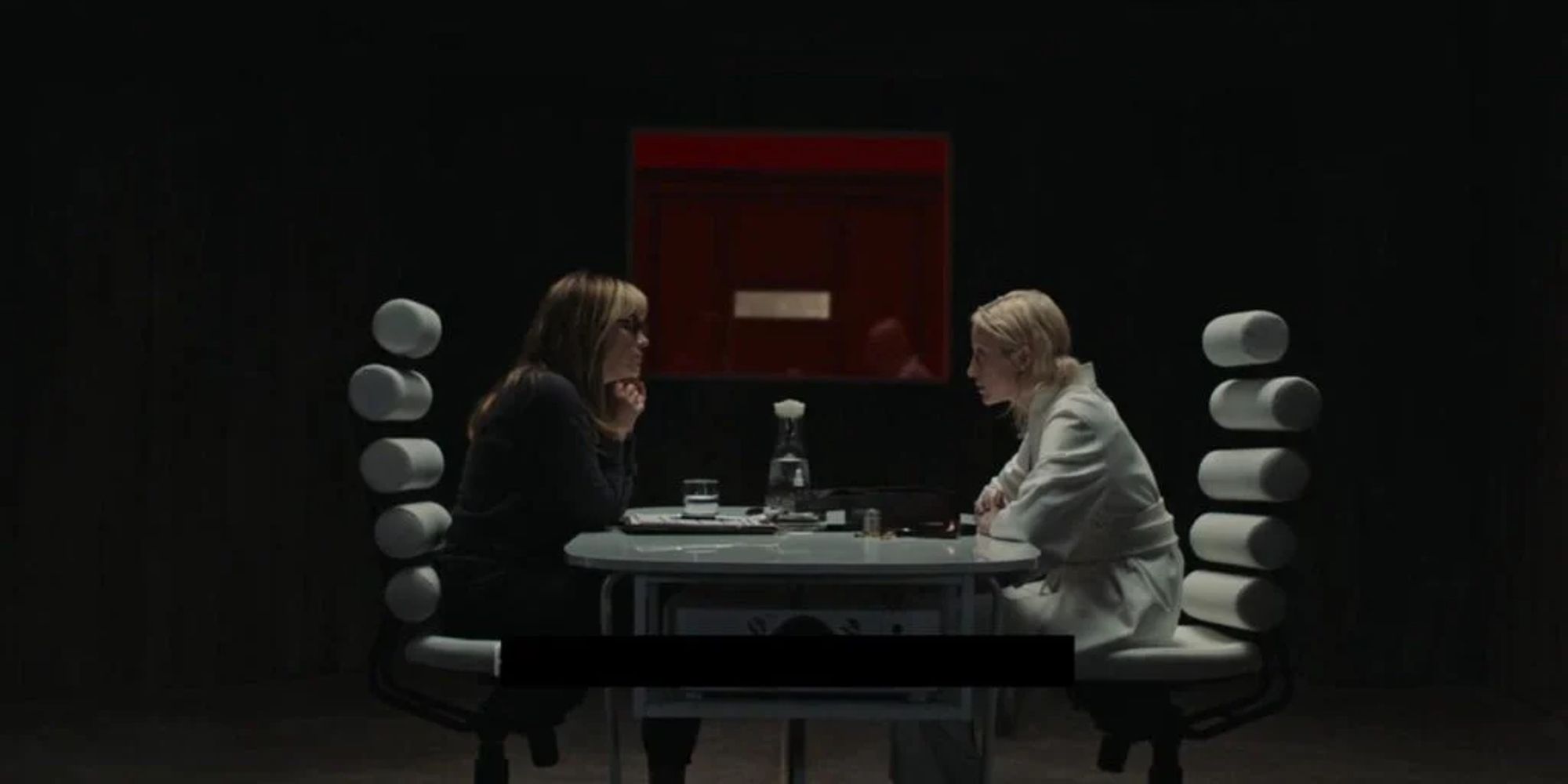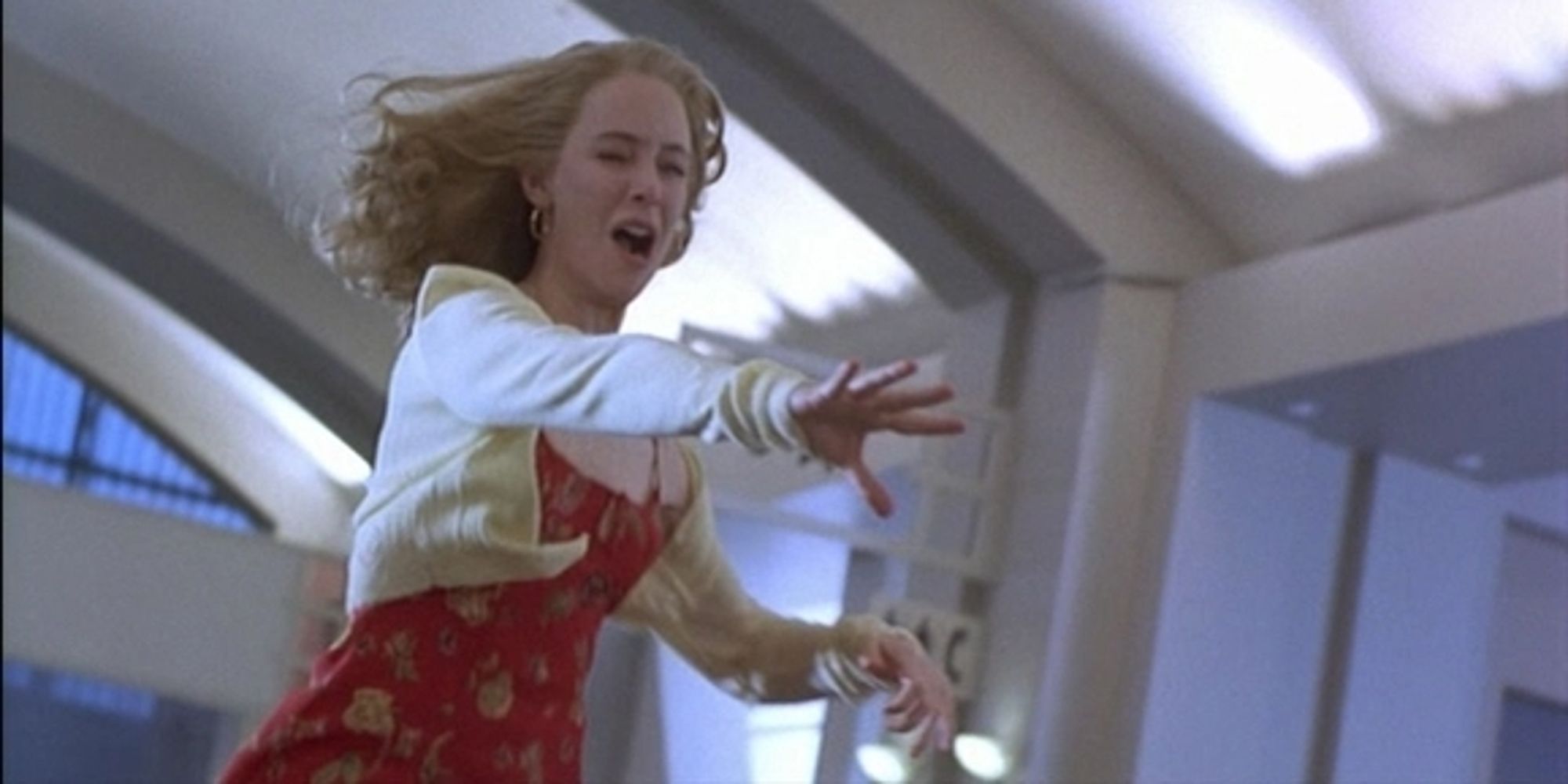Science fiction can often function as a fascinating hypothetical look at the extreme possibilities of technology. While many of these stories can be exciting and instill a sense of wonder, others show the darker shades of these possibilities.
Some of the most notable achievements in sci-fi cinema double as cautionary tales, showing us the negative consequences that could occur if humans continue down a certain path. The following are some of the most dour and unsettling notes sci-fi films have left us to ponder over long after viewing.
Spoiler Alert! The endings of each film on this list will be discussed in detail.
Planet of the Apes (1968)
After crash landing on a foreign planet, three astronauts deduce that they are light years away from Earth and two thousand years in the future. They explore further and discover that the planet is ruled by apes, taking humans as their slaves.
In their plot to escape from the apes, astronaut Taylor (Charlton Heston) begins finding evidence that humans once inhabited the planet. His suspicions are confirmed in the film's final gut-punching moments when, while leaving the ape colony, Taylor sees the Statue of Liberty, half-submerged in the sand. This striking image would go on to become one of the most iconic in sci-fi movie history.
Upgrade (2018)
When he and his wife are assaulted, Grey Trace (Logan Marshall-Green) wakes up to find he's been paralyzed, and his wife killed. While hospitalized, he's visited by tech mogul Eron Keen (Harrison Gilbertson), who offers him a life-changing operation, installing a STEM chip that will allow his body to operate at full capacity.
It isn't long before the STEM begins communicating with Grey mentally and forces them to take revenge on Grey's assailants. That vengeance doesn't come without a price, however, and after the culprits are defeated, Grey is left thinking it was all a hallucination and that his wife is still alive. In reality, STEM has taken full control of his body and Grey's consciousness is trapped in his own brain, forever sheltered from the truth.
Brazil (1985)
In an over-crowded dystopian future, Sam Lowry (Jonathan Pryce) is a low-level government employee who often daydreams he's an angel-like warrior, rescuing a damsel in distress. Excitement soon finds its way into Sam's life, however, when a teleprinter malfunction sets off a series of events, embedding Sam in a revolution against the bureaucracy.
Terry Gilliam's gonzo masterpiece treats its viewers to a wild third act, where Sam and Jill (Kim Greist), the woman of his dreams, escape together from hordes of soldiers and monsters. That is until it's revealed that Sam's brain had been shattered beyond repair by the government's torture of him earlier in the film. The haunting final shot lingers well into the credits, as a delusional Sam is left alone in the massive torture chamber, smiling and humming, unaware of his tragic fate.
A.I. Artificial Intelligence (2001)
A.I. Artificial Intelligence follows David (Haley Joel Osment), a robotic boy who is adopted by a family as part of a trial for the technology. It isn't long before he is deemed unsuited for the family's lifestyle, and he is left abandoned in the woods. David then embarks on a journey to find his place in the world.
After his adventure leaves him on the ocean floor among humanity's sunken ruins for two millennia, David is discovered by evolved "Mechas". Through advanced scientific means, they are able to grant David's utmost desire of spending a day with his former surrogate mother, who he still loves. While David is content in this moment, the audience is left knowing that none of it is real and that his mother didn't actually reciprocate his love for her, as her simulated self claims to in the film's somber finale.
The Thing (1982)
John Carpenter's take on the Alien formula, The Thing sees a group of research scientists in Antarctica trapped with a mysterious entity in their remote outpost. When they discover the hostile creature can take the form of any human, they become increasingly paranoid and mistrust each other as their numbers dwindle.
The film's tense final moments see the duo of remaining survivors, Childs (Keith David) and MacReady (Kurt Russell), alone in the ruins of the destroyed outpost. Only somewhat certain the creature has been destroyed, neither of them knows if the other can be trusted. The audience is left sitting in silence with them both as they share a bottle of Scotch, accepting that survival at this point is both unlikely and irrelevant.
A Clockwork Orange (1971)
In a dystopian futuristic Britain, gang leader Alex DeLarge (Malcolm Mcdowell) and his band of "droogs" roam the city streets, committing heinous acts of violence to various innocents. When Alex is finally convicted for murder and sentenced to 14 years in prison, he is offered a chance to be a test subject for a new form of aversion therapy.
After his release, Alex's crimes come back to haunt him in the form of beatings from former victims, and he eventually attempts suicide. In the hospital, he is tested, and the doctors conclude the therapy was a success, leaving Alex seemingly free of urges of sex and violence. Just before the credits roll, however, Alex has a perverse and deranged daydream, revealing he is not truly cured. Even for a director as cynical as Stanley Kubrick, the ending stands out as an unsettling grace note to an already disturbing tale.
Invasion of the Body Snatchers (1978)
After a series of reports of humans acting strangely, connections are eventually made between the odd behaviors and a group of extraterrestrial "Pods" that landed in San Francisco. As it turns out, the Pods have been duplicating humans in their sleep, dissolving their victim's original bodies.
After their plans to thwart the Pods' invasion plans, protagonists Matthew (Donald Sutherland) and Nancy (Veronica Cartwright) are seemingly the last original humans left in San Francisco. When they reunite, however, Matthew shrieks and points at Nancy, revealing he has been converted by the Pods, leaving Nancy alone in a city that no longer belongs to humans.
The Fly (1986)
Intense genius and scientist Seth Brundle (Jeff Goldblum) creates a teleportation device, using himself as its first test subject. All goes according to plan, until a fly sneaks into the machine in the middle of the process, meshing its DNA with Brundle's.
The anomaly isn't noticeable at first, but over time, the fly DNA takes over Brundle's body, making his personality and appearance grow increasingly monstrous. The film comes to a tragic climax, with a mutated Brundle begging his horrified girlfriend, Ronnie (Geena Davis), to put him out of his misery via shotgun. Everything leading up to this point foreshadows a fateful end for Brundle, but we nonetheless hope his descent will turn around. Instead, we're left with a bleak finale that suggests there are some things humanity is not meant to achieve.
Possessor (2020)
Tasya Vos (Andrea Riseborough) is an assassin using special technology to control a person's body to assassinate targets. Though her work leads to mental exhaustion, she nonetheless chooses to accept her biggest job yet, assassinating a wealthy CEO by taking control of his daughter's fiancé, Colin Tate (Christopher Abbott).
When the job goes awry, Tate and Vos find their lives entangled, eventually leading to a confused killing of Vos' family. Was this a result of Vos losing touch with reality, or an act of her subconscious? The movie's refusal to answer that question makes the climax all the more disturbing and thought-provoking.
Twelve Monkeys (1995)
In the year 2035, 40 years after a virus wipes out most of the population, James Cole (Bruce Willis) is imprisoned in an underground facility, haunted by dreams of a shooting in an airport. He is eventually selected to go on a mission back in time to help develop a cure to the virus.
After multiple misdirects and red herrings, Cole finally finds the man who is about to spread the virus in the 90s, attempting to stop him from getting on a flight. At the airport, he is spotted drawing his gun by police and shot dead. As his body collapses, we see a young Cole watching his future self die, an image that would stay with him for a lifetime.

